Our Wild Shrimp
Wild Shrimp Product List
-
Wild American Whites
-
Key West Pinks
-
Wild American Browns
-
North Florida Hoppers
-
Rock Shrimp
-
Royal Reds
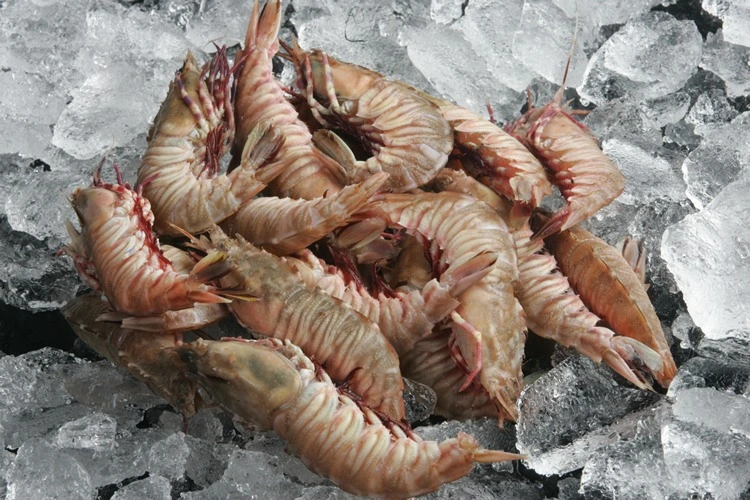
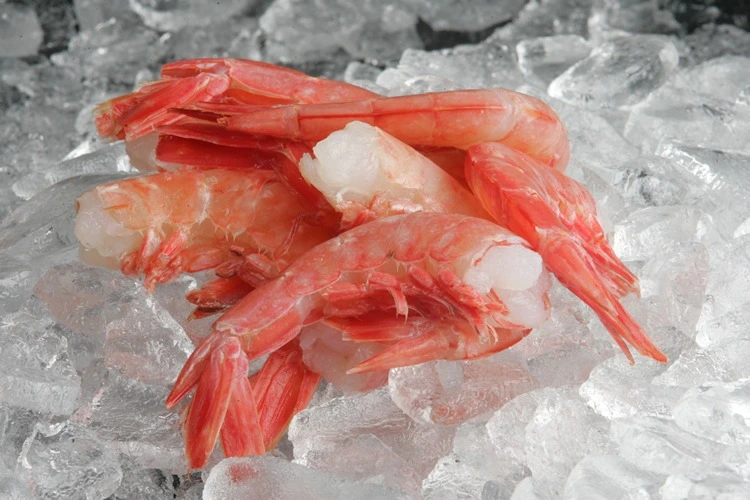
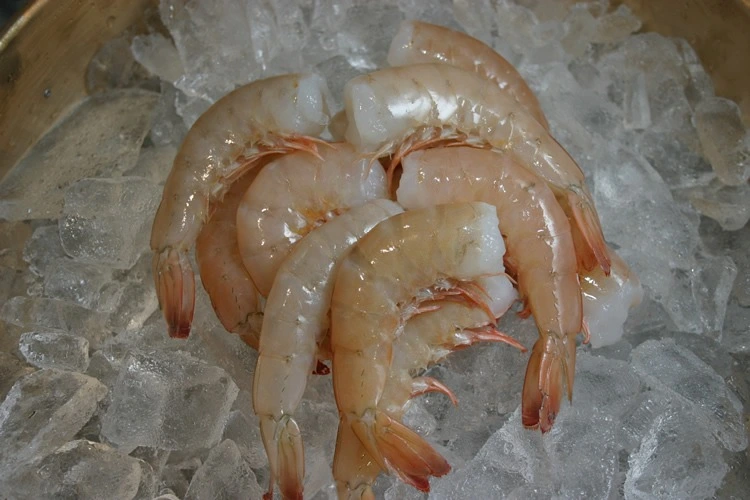
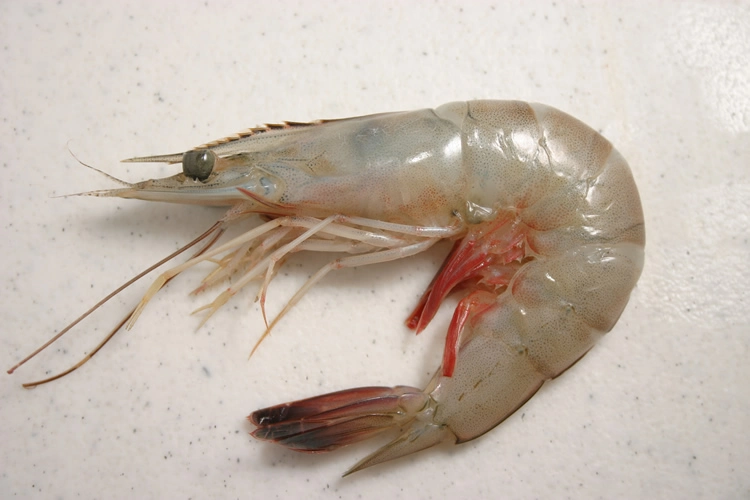
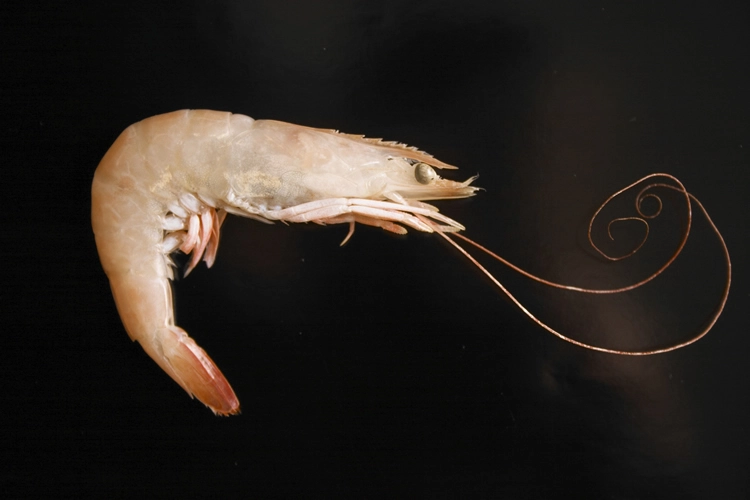
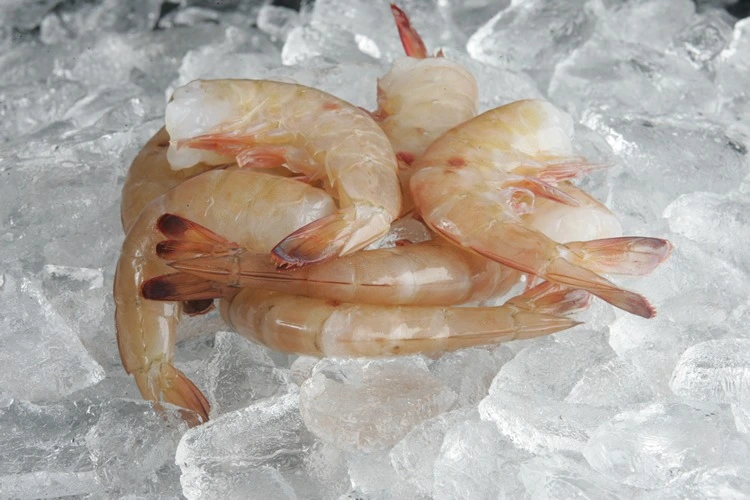
Wild American Whites
With a delicate flavor that tantalizes the taste buds and a velvety texture that melts in your mouth, these remarkable White Shrimp are the epitome of culinary bliss. They beckon you to embark on a culinary adventure, whether you choose to fry them to golden perfection or sauté them to unleash a symphony of flavors. It's no wonder that they reign as the reigning champions of the Gulf, being the most prolific and sought-after species in these bountiful waters.

The White Shrimp, scientifically known as Penaeus setiferus, is a species of marine shrimp that belongs to the family Penaeidae. It is commonly found in the western Atlantic Ocean, ranging from the Gulf of Mexico to the southeastern coast of the United States, including the Atlantic coast of Florida.
Here are some key characteristics and information about the White Shrimp:
Appearance: White Shrimp have a slender and elongated body with a translucent or grayish-white coloration, which gives them their common name. They have a well-developed rostrum (a long, pointed extension of the carapace) and long antennae.
Size: Adult White Shrimp can reach an average size of 6 to 8 inches (15 to 20 centimeters) in length, although larger individuals have been recorded.
Habitat: White Shrimp are typically found in estuaries, lagoons, and shallow coastal waters with sandy or muddy bottoms. They are often associated with seagrass beds and marshes, as these areas provide shelter and food sources.
Behavior: White Shrimp are primarily nocturnal and tend to be more active during the night, while resting in the sediment during the day. They are opportunistic feeders, consuming a wide range of food including detritus, small invertebrates, and algae.
Life Cycle: The life cycle of White Shrimp involves distinct stages. Adult females release their eggs into the water, where they are fertilized by the males. The eggs then hatch into larvae called zoea, which drift with ocean currents. As they grow, the larvae go through several stages of development until they transform into postlarvae, resembling miniature versions of the adults. The postlarvae settle in shallow, protected areas and gradually grow into adults.
Commercial Importance: White Shrimp are economically important in the commercial fishing industry. They are highly valued for their delicious taste and are harvested for both domestic and international markets. They are often caught using trawl nets or traps.
Sustainability: White Shrimp populations are carefully managed to ensure their sustainability and protect the ecosystem. Fishing regulations and guidelines are implemented to control harvest levels and protect the breeding stock.
It’s worth noting that the scientific understanding of species can evolve over time, so it’s always beneficial to consult the latest research and resources for the most up-to-date information on White Shrimp (Penaeus setiferus) or any other species of interest.
Key West Pinks
The Key West pink shrimp, scientifically known as Farfantepenaeus duorarum, has a firm and succulent texture. Its meat is slightly sweet with a delicate flavor. These shrimp are best used for cooking in dishes such as shrimp scampi, ceviche, or simply grilled, as their texture holds up well and enhances the overall taste of the dish.

Key West Pinks, scientifically known as Farfantepenaeus duorarum, are a delightful species of shrimp that thrive in the warm waters surrounding Key West, Florida. Here is some information about these fascinating crustaceans:
Scientific Name: The scientific name for Key West Pinks is Farfantepenaeus duorarum. This species is part of the family Penaeidae, which includes various other commercially important shrimp species.
Appearance: Key West Pinks showcase a stunning pinkish hue, which gives them their name. They have a slender, elongated body with distinctive long antennae and a well-defined rostrum. Their vibrant coloration adds an appealing visual element to their culinary appeal.
Size: Adult Key West Pinks typically grow to around 6 to 8 inches (15 to 20 centimeters) in length. However, they can sometimes reach larger sizes.
Habitat: These shrimp are primarily found in the warm, coastal waters around Key West, Florida, and the surrounding areas. They inhabit seagrass beds, coral reefs, and sandy or muddy bottoms.
Flavor and Texture: Key West Pinks are highly regarded for their exceptional flavor and texture. They offer a sweet and delicate taste with a hint of brininess, making them a favorite among seafood enthusiasts. Their meat is firm and succulent, providing a delightful balance in each bite.
Culinary Uses: Key West Pinks are highly sought after for their culinary excellence. They are incredibly versatile and can be prepared using various cooking methods. They are excellent when grilled, boiled, steamed, sautéed, or included in dishes such as stir-fries, pastas, and seafood stews. Their vibrant pink color adds visual appeal to any seafood presentation.
Sustainable Fishing: The harvest and management of Key West Pinks are carefully regulated to ensure the sustainability of their populations and the preservation of the marine ecosystem. Fishing regulations and guidelines are in place to control harvest levels and protect their breeding stock.
Key West Pinks, with their enticing color, exquisite flavor, and culinary versatility, embody the coastal charm and gastronomic richness of the Key West region, making them a true delight for seafood lovers.
Wild American Browns
Prepare to indulge in an explosion of savory delights with the wild American brown shrimp. With a luscious flavor profile that will leave you craving for more and a mesmerizing golden-brown hue that tantalizes the eyes, these shrimp are an unrivaled culinary treasure. They boast a delicate tenderness, setting them apart from hoppers, and invite you to unleash your culinary imagination. No matter your preferred cooking style, these magnificent creatures are poised to ignite your taste buds and elevate your epicurean adventures to unparalleled heights.

Wild American Browns, scientifically known as Farfantepenaeus aztecus, are a captivating species of shrimp native to the coastal waters of the United States. Here is some information about these remarkable crustaceans:
Scientific Name: The scientific name for Wild American Browns is Farfantepenaeus aztecus. They belong to the family Penaeidae, which encompasses various commercially important shrimp species.
Appearance: Wild American Browns feature an enchanting brownish coloration that sets them apart. They have a streamlined body with a distinct rostrum and long antennae. Their unique color adds a touch of rustic charm to their overall appearance.
Size: Adult Wild American Browns typically reach a length of 6 to 8 inches (15 to 20 centimeters). However, larger individuals have been recorded on occasion.
Habitat: These shrimp inhabit the coastal waters of the United States, particularly the Gulf of Mexico and the Atlantic coast. They can be found in estuaries, bays, and nearshore environments with sandy or muddy bottoms.
Flavor and Texture: Wild American Browns offer a delectable flavor profile and a pleasing texture. They have a mildly sweet taste with a hint of brininess, making them a delightful choice for seafood enthusiasts. Their meat is firm and succulent, providing a satisfying mouthfeel.
Culinary Uses: Wild American Browns are highly regarded for their culinary versatility. They lend themselves well to various cooking methods, including grilling, boiling, steaming, sautéing, and stir-frying. They are a popular ingredient in a wide range of dishes, such as shrimp scampi, shrimp boils, pasta dishes, and seafood soups.
Sustainability: The fishing of Wild American Browns is carefully managed to ensure the sustainability of their populations and the preservation of the marine ecosystem. Fisheries regulations and sustainable fishing practices are in place to maintain healthy stocks and minimize environmental impact.
Wild American Browns, with their distinctive brown color, delightful flavor, and versatile nature, embody the coastal heritage and gastronomic treasures of the United States. They are a testament to the rich marine biodiversity and the pleasure of indulging in fresh, wild-caught seafood.
North Florida Hoppers
Prepare to embark on a tantalizing journey of taste with the extraordinary North Florida Hoppers. These shrimp, renowned for their exquisite flavor, deliver an unparalleled sensory experience. Immerse yourself in their firm, tantalizingly crisp texture, boasting a delightful bite that will leave you yearning for more. Bursting with the sweetness of the ocean, every succulent morsel will transport your palate to aquatic paradise. Indulge in the sheer pleasure of easy peeling, making every cooking adventure effortless and enjoyable. Whether you choose to boil these magnificent creatures to perfection or explore other culinary delights, North Florida Hoppers are the epitome of shrimp ecstasy.

North Florida Hoppers, scientifically known as Penaeus duorarum, are a shrimp species found in the high salinity waters of St. Joe Bay, located in North Florida. Here is some information about these shrimp:
Scientific Name: The scientific name for North Florida Hoppers is Penaeus duorarum. This species is part of the family Penaeidae, which includes various other commercially important shrimp species.
Habitat: North Florida Hoppers inhabit the high salinity waters of St. Joe Bay in North Florida. St. Joe Bay is known for its pristine ecosystem and provides an ideal environment for the development and production of these shrimp.
Local Production: The North Florida Hoppers are locally produced, meaning they are harvested and sourced from the St. Joe Bay area. The unique characteristics of the bay, including the high salinity levels, contribute to the development and quality of these shrimp.
Flavor and Texture: North Florida Hoppers are known for their delightful flavor and texture. They offer a succulent and slightly sweet taste, making them a popular choice among seafood enthusiasts. The texture is firm yet tender, providing a satisfying bite.
Culinary Uses: These locally produced shrimp are highly versatile in the kitchen. They can be prepared using various cooking methods such as boiling, grilling, sautéing, or incorporating them into dishes like shrimp scampi, stir-fries, pasta, or seafood stews. The fresh and local nature of North Florida Hoppers adds to the appeal of their culinary applications.
Sustainability: The fishing and production of North Florida Hoppers are often managed to ensure sustainability and the preservation of the local ecosystem. Fisheries regulations and sustainable fishing practices are typically in place to maintain the health and abundance of the shrimp population.
North Florida Hoppers, or Penaeus duorarum, sourced from the high salinity waters of St. Joe Bay, offer a delightful seafood experience with their unique flavor and texture. These locally produced shrimp reflect the natural beauty and bounty of the North Florida coastal region, providing a culinary delight for those who appreciate fresh and sustainably sourced seafood.
Rock Shrimp
Prepare for an extraordinary epicurean escapade with the mesmerizing Rock Shrimp. As they are baked or broiled, their resilient shell imparts an enchanting infusion of lobster-like flavors and textures that will transport you to the depths of seafood indulgence. Brace yourself for a delightful adventure as you embark on the challenge of peeling these formidable crustaceans, for the rewards that await are nothing short of culinary triumph. The sheer satisfaction derived from conquering their protective armor is a testament to the delectable treasures that lie within. With each succulent bite, you will find that the Rock Shrimp's tantalizing essence is indeed a treasure well worth pursuing.

Rock shrimp, scientifically known as Sicyonia brevirostris, are a fascinating species of shrimp found in the warm waters of the western Atlantic Ocean, particularly along the southeastern coast of the United States. Here is some information about rock shrimp:
Scientific Name: The scientific name for rock shrimp is Sicyonia brevirostris. They belong to the family Sicyoniidae, which includes other species of shrimp as well.
Appearance: Rock shrimp have a unique appearance that sets them apart from other shrimp species. They have a hard, segmented exoskeleton with a distinct rock-like texture, which gives them their name. They feature a long, narrow body with a short rostrum (nose) and possess strong pincers.
Habitat: Rock shrimp dwell in rocky or coral reef habitats along the Atlantic coast of the United States, ranging from Florida to North Carolina. They are commonly found in waters up to 240 feet (73 meters) deep.
Flavor and Texture: Rock shrimp are renowned for their sweet and succulent meat, similar to that of lobster. Their firm texture and slightly chewy consistency make them a unique and delightful culinary choice.
Culinary Uses: Rock shrimp are highly valued in the culinary world for their exceptional taste and texture. They are often compared to lobster for their similar flavor profile. These shrimp are typically prepared by boiling, broiling, grilling, or sautéing. Their meat is typically removed from their hard exoskeleton before consumption.
Commercial Harvest: Rock shrimp were initially considered a bycatch species, often caught unintentionally by fishermen targeting other shrimp species. However, they have gained popularity and are now specifically targeted for commercial harvest due to their culinary appeal.
Sustainable Fishing: The fishing of rock shrimp is regulated to ensure the sustainability of their populations and protect the marine ecosystem. Fisheries management measures, such as size restrictions and catch limits, are implemented to maintain healthy stocks and prevent overfishing.
Rock shrimp, scientifically known as Sicyonia brevirostris, present a unique culinary experience with their distinctive appearance, delectable flavor, and lobster-like texture. Their rock-hard exterior hides a delectable treasure, making them a prized delicacy for seafood enthusiasts seeking a special treat from the ocean depths.
Royal Reds
Prepare to be captivated by the sheer elegance and indulgence of the majestic Royal Reds, the epitome of delicacy among our native shrimp species. Delight in their unparalleled tenderness, boasting a texture so velvety it caresses your palate with every sumptuous bite. These regal gems are renowned for their enchanting sweetness, an exquisite symphony of flavors that dances upon your taste buds like a celestial melody. And here's the secret that adds a thrilling twist to your culinary adventure: they cook up in half the time, defying expectations and whisking you into a world of rapid gastronomic gratification. Brace yourself for an epicurean encounter like no other as you savor the royal allure of the extraordinary Royal Reds.

Royal Reds, scientifically known as Pleoticus robustus, are a remarkable species of deep-water shrimp found along the southeastern coast of the United States. Here is some information about royal red shrimp:
Scientific Name: The scientific name for royal reds is Pleoticus robustus. They belong to the family Solenoceridae, which includes other species of deep-water shrimp.
Appearance: Royal red shrimp have a striking deep-red color, which gives them their name. They have a slender body with elongated antennae and a pronounced rostrum (nose). Their vibrant hue makes them visually appealing and adds an element of elegance to any seafood dish.
Habitat: Royal reds inhabit the deep waters of the continental shelf along the southeastern coast of the United States, particularly the Gulf of Mexico. They are typically found at depths ranging from 500 to 2,000 feet (150 to 600 meters).
Flavor and Texture: Royal red shrimp are known for their rich, sweet flavor that sets them apart from other shrimp species. They offer a delicate and succulent texture, often described as velvety and buttery. The unique taste and texture combination make them a highly sought-after culinary delight.
Culinary Uses: Royal reds are highly regarded for their culinary excellence. They are versatile and can be prepared using various cooking methods, such as boiling, steaming, grilling, or sautéing. Their distinct flavor profile shines in a range of dishes, from simple shrimp cocktails to more complex seafood creations.
Quick Cooking: One notable characteristic of royal red shrimp is their rapid cooking time. Due to their delicate texture, they cook twice as fast as other shrimp species. This quality makes them convenient for quick and easy preparation in the kitchen.
Sustainability: The fishing of royal red shrimp is regulated to ensure sustainable harvesting practices and protect the deep-water ecosystems. Fisheries management measures, such as catch limits and size restrictions, are in place to maintain healthy stocks and preserve the long-term viability of the species.
Royal reds, scientifically known as Pleoticus robustus, offer a gourmet seafood experience with their vibrant color, exquisite flavor, and rapid cooking time. These deep-water treasures from the Gulf of Mexico embody the elegance and richness of the ocean depths, inviting seafood enthusiasts to savor their delectable taste and indulge in a true culinary pleasure.